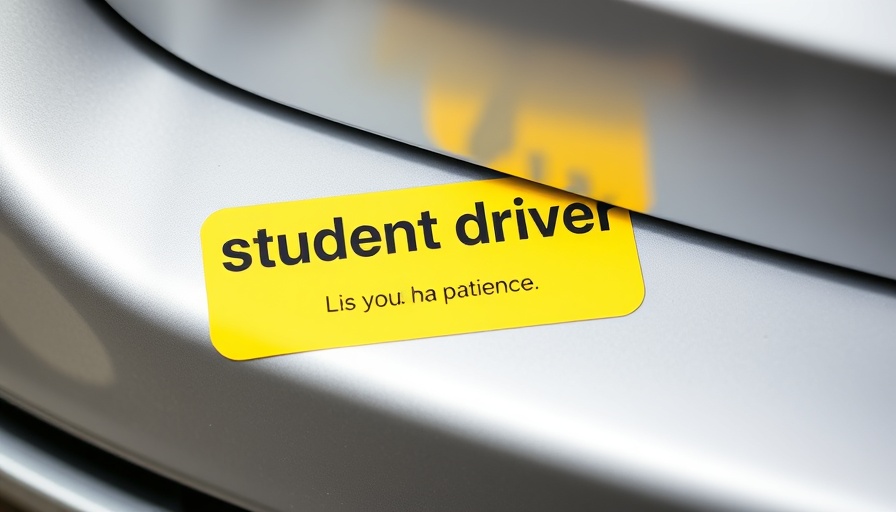
Understanding the Role of Student Driver Stickers
When we see a vehicle adorned with “Student Driver” stickers, our immediate reaction may hold a mixture of annoyance and understanding. These stickers serve to notify other drivers that the person behind the wheel is still mastering their skills. While many might assume these stickers are both visual warnings and regulatory symbols, there are deeper implications to consider.
Legal Status of Student Driver Stickers
In most states, these stickers are not a legal requirement; with New Jersey being a notable exception where learner drivers must display these identifiers. The absence of a blanket law across the U.S. raises essential questions about the safety measures in place for new drivers. Are we relying too heavily on a simple sticker that may or may not influence road behavior? As noted by driving education experts, a sticker could encourage cautious behavior among other drivers, but it creates a false sense of security for learner drivers themselves, who might rely too heavily on this visual cue.
The Psychological Impact of Student Driver Stickers
Anecdotal evidence presents a split perspective. Some new drivers report feeling safer and more secure while displaying these stickers, while others have experienced increased pressure and scrutiny. These psychological nuances emphasize the importance of conversation around driver education and support systems rather than visuals alone. This sentiment echoes a broader discussion in the community regarding the adequacy of means for empowering novice drivers.
The Limitations of Reliance on Stickers
While they can promote patience from other motorists, the reality is that novice drivers are held to the same laws as everyone else. A sticker will not prevent tickets or accidents if the driver fails to adhere to traffic rules. Thus, greater focus should be placed on robust training programs that offer real-world driving practice rather than relying on a sticker as a safety net. Every learner's journey should include lessons on defensive driving and accident prevention.
What This Means for Parents and Driving Instructors
For parents and driving instructors, the takeaway is abundantly clear: the educational foundation matters much more than simple identification markers. How can we better connect teaching with practical applications on the road? Driving schools should prioritize creating experiential learning opportunities, engaging students in diverse driving conditions, and offering sound feedback when behind the wheel.
Final Thoughts: The Evolving Landscape of Driving Education
As we evolve into a future where technology and driving behaviors are constantly changing, it remains crucial to prioritize teaching skills that cover all facets of navigation and road awareness. Awareness delivered by visual indicators like stickers pales in importance when weighed against the necessity of comprehensive education. With the community's support, learning drivers can be equipped with skills that extend beyond mere road markings.
Call to Action: Let's Advocate for Effective Driver Education
Next time you encounter a student driver sticker on the road, remember its limitations. Instead of merely endorsing the use of stickers, let's support initiatives that promote better driver education and assure that our roads are safe for everyone.
 Add Row
Add Row  Add
Add 




Write A Comment